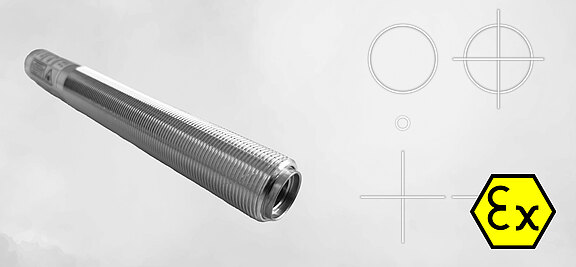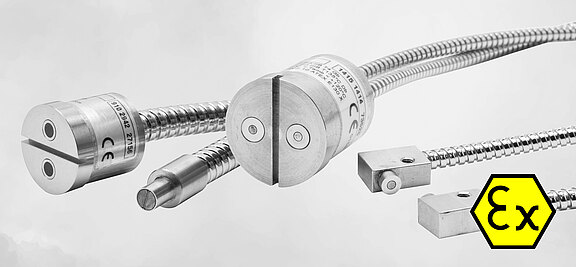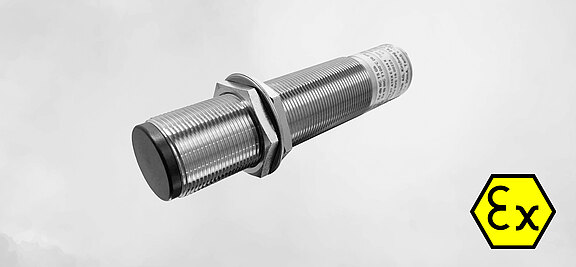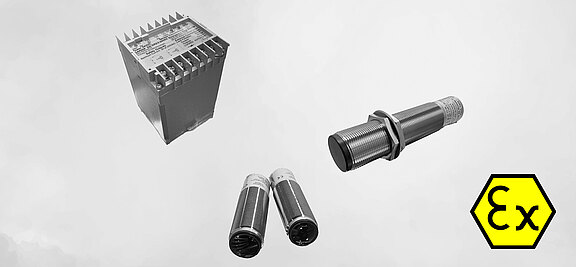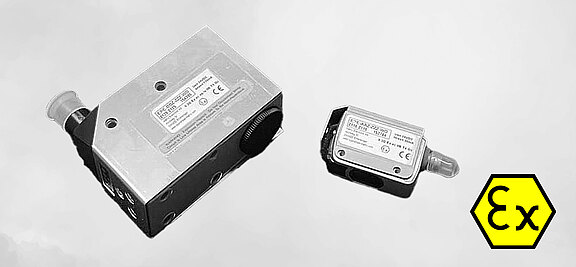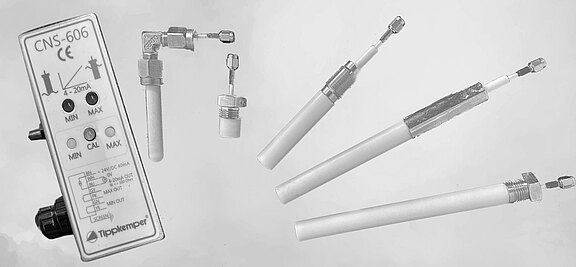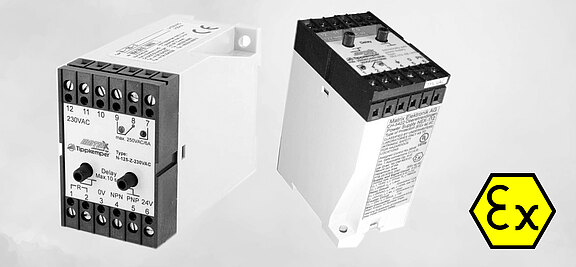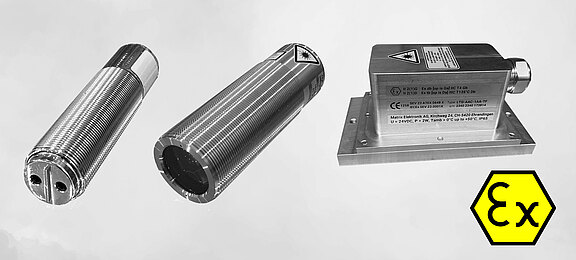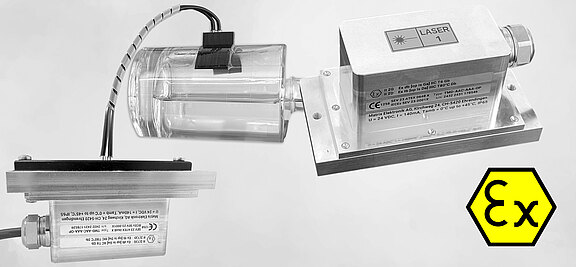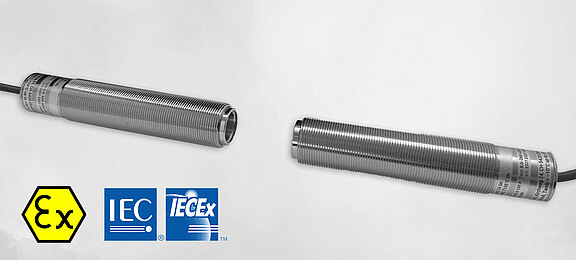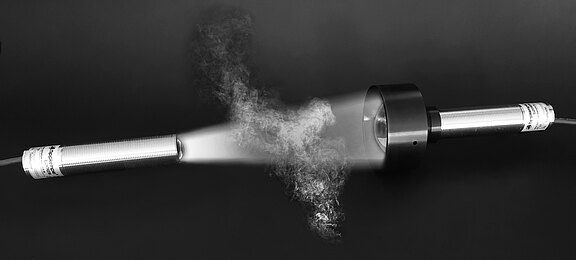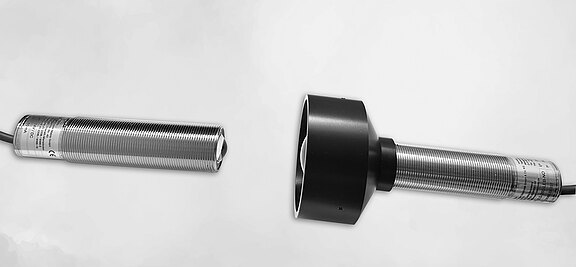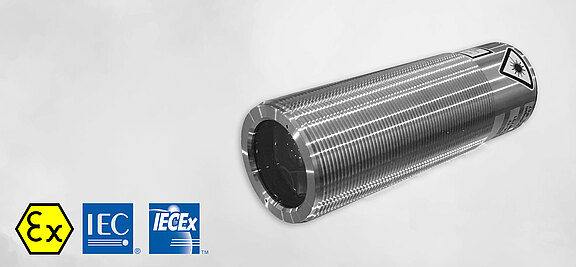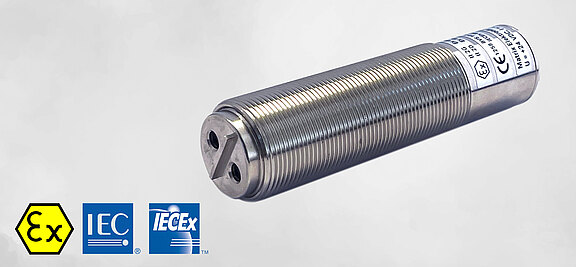ASSURIX Intrinsically Safe Photoelectronic Sensors
Intrinsically safe optoelectronic sensors are optical sensors designed for use in potentially explosive atmospheres. In such areas, there is a risk of ignition from electrical sparks. By limiting the electrical energy to a safe level, they can detect flammable gases, vapours or dust without causing ignition themselves. These sensors convert light signals into electrical signals and are often used for level detection or for detecting objects in potentially explosive environments.
Our intrinsically safe sensors are available as through-beam sensors, proximity switches (photoelectric sensors) and retro-reflective sensors.
OM-AX-01 – ASSURIX Intrinsically Safe Photoelectronic Sensors (3-wire construction)
- For use in CL I, CL II, CL III, Division 1, GR ABCDEFG, HAZARDOUS LOCATIONS.
- For use in ATEX Ex Zones 1, 2
- Type of Ex protection: Intrinsically safe II 2 G Ex ia IIC T6 Gb.
- CLASSIFIED BY UNDERWRITER'S LABORATORIES INC. ASSIGNED CONTROL No. 24VL.
- II 2 G Ex ia IIC T6 Gb
- ATEX Certification no. DMT 03 ATEX E003
OM-AX-02 – ASSURIX Intrinsically Safe Photoelectronic Sensors (NAMUR types)
- Zur Anwendung in Ex-Zonen 1, 2 / CL I, CL II, CL III, Division 1, GR ABCDEFG HAZARDOUS LOCATIONS.
- Zündschutzart "eigensicher" II 2 G Ex ia IIC T6 Gb.
- CLASSIFIED BY UNDERWRITER'S LABORATORIES INC.
- ASSIGNED CONTROL No. 24VL. ATEX Bescheinigung DMT 03 ATEX E003
NAMUR stands for “Normenarbeitsgemeinschaft für Mess- und Regeltechnik in der chemischen Industrie.” The name of the organization has become synonymous with a specific type of sensors and their signal transmission method, which are primarily used in potentially explosive atmospheres (Ex areas) and safety-critical applications.
The principle behind NAMUR technology
Conventional 2-wire sensors indicate a switching state (e.g., “detected” or “not detected”) by closing or opening a contact. However, in the event of a cable break or short circuit, this state can no longer be reliably identified. This is precisely where NAMUR technology comes in:
Instead of a simple switching state, NAMUR sensors operate with a defined current range. The switching information is transmitted via the current flowing in the cable:
> 2.1 mA: This indicates a short circuit in the system.
2.1 mA to 1.2 mA: This is the “normal” operating state (“not detected”).
< 1.2 mA to 0.2 mA: This is the switching state (“detected”).
< 0.2 mA: This indicates a wire break.
The decisive advantage: intrinsic safety
NAMUR sensors are intrinsically safe devices and must be operated with a NAMUR isolation amplifier. This amplifier:
- Supplies power to the sensor.
- Continuously monitors the current flow.
- Converts NAMUR signals into a standard switching signal (e.g., PNP or NPN) or a relay output.
- Ensures that the energy transmitted into the hazardous area is limited to a harmless level to prevent ignition.
Through this combination, the isolation amplifier can reliably detect and signal not only the switching state but also a fault in the system—whether a cable break or a short circuit. This greatly increases the safety of installations.


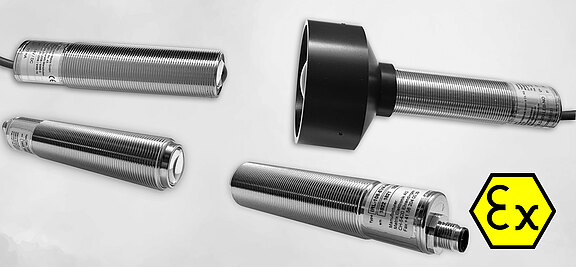
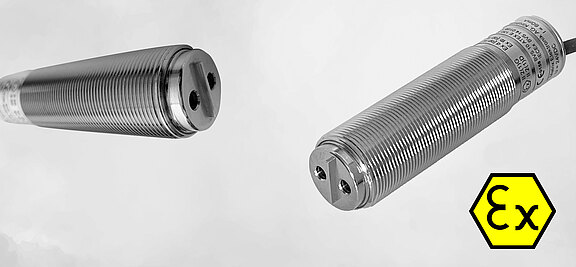
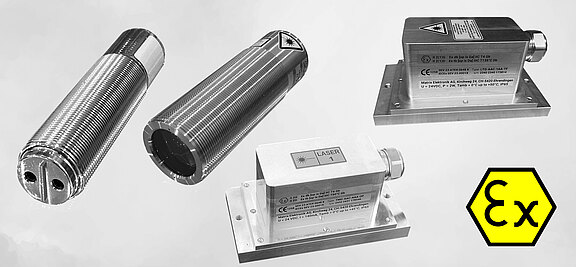
![[Translate to Englisch:] Kamerasysteme und Lichtquellen EX-geschützt [Translate to Englisch:] Kamerasysteme und Lichtquellen EX-geschützt](/fileadmin/_processed_/9/3/csm_kamerasysteme_ex_ada3fb637b.jpg)
